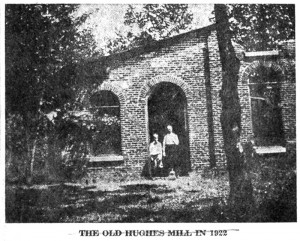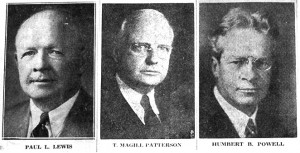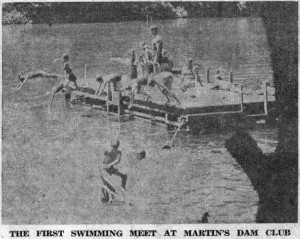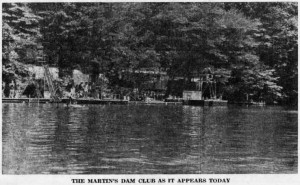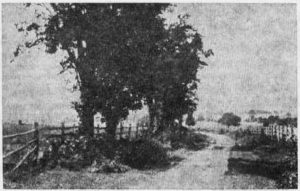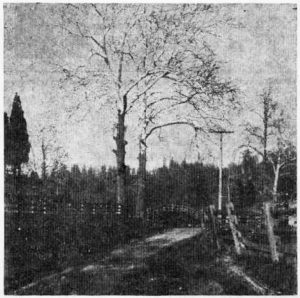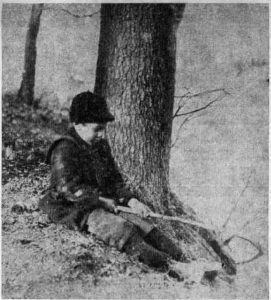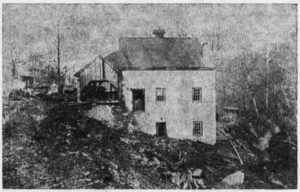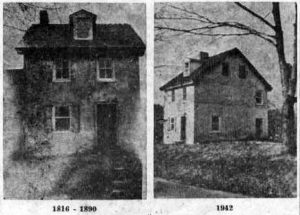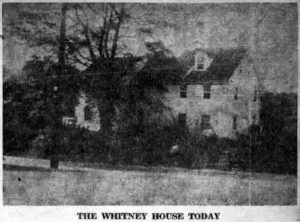Though it may be true, as we said earlier in this series, on the Wayne of 1922, that 30 years ago may seem “but yesterday” to many of us, it still must seem many yesterdays ago to all of us wen a new Chevrolet car could be purchased for $525. Nevertheless the Wayne Motor Sales Company was advertising such a car in “The Suburban” in 1922.
In addition the autos of that year had made “about 30 improvements”, since the spring of 1921, including “three speeds forward, water pump, one man top and gypsy style back curtain”. By December the Chevrolet “Sedanette” was the newcomer in the automobile field, with the public invited “to inspect this latest and most sensational addition to the Motor World’s Sport Car Field.” This sedanette cost $850.
Ford, “the Universal Car”, sold one model as low as $295, as advertised by the Suburban Auto Sales Company, of Wayne. George L. Barnett was showing a Packard Single Six at $2350 in his show rooms. Allan C. Hale, Maine Line distributor of Buick, had a wide selection ranging in price from $895 for a 2-passenger roadster, to $2375 for a 7-passenger sedan. The Strafford Motor Shop was selling Maxwell touring cars and roadsters at $885, with sedans at $1485.
The Wayne Business Men’s Association was formed late in 1922, when some 40 of the business men and women of Wayne held an organization meeting, at which Everett E. Bürlingame, president of the Bryn Mawr Business Men’s Association, told of what his organization was accomplishing. Elections resulted in the choice of Harvey M. Hale, president; Fred H. Treat, vice-president; Walter H. White, secretary; William C. Devereaux, treasurer, with Louis Jacquette Palmer serving as solicitor. The objects of the association were “to increase the prosperity and welfare of members, and to cooperate with other civic organizations to secure municipal improvements.
Elections in the Radnor Fire Company were spirited in 1922 with several candidates running for most offices. Final results were Charles E. Clark, president; John M. Gallagher, vice-president; Harry C. Hunter, treasurer and Harry Bryan, secretary. Harvey M. Hale was chosen Chief, with James K. Dunne as first assistant.
A boarding school for boys that held a prominent place not only in the community, but in the educational world, was St. Luke’s, which has since gone out of existence. When it was in operation it was located in what was later to become the original building of the Valley Forge Military Academy, at the intersection of Eagle and Radnor roads.
The Wayne Boy Scout Troop was very active 30 years ago under the leadership of Joseph Y. Wilson. In the spring of 1922 these boys were hosts to all the other Delaware County Troops at a get-together such as had never been held up to that time. Staged at the log cabin on the LeBoutillier property, it was a huge affair with Julian Saloman, of New York, as the chief speaker. Mr. Saloman had been the guiding spirit of the jamboree at London two years before, when he headed the Indian pageant which won for American Scouts the first prize in competition with Scouts from all over the world. When he appeared at the Wayne Troop affair he was in full Indian regalia as he talked on Indian lore and legends, concluding with Indian dances. A review and inspection of the Delaware County Scout Troops, with refreshments for all, concluded the big day in Wayne.
The Wayne Lodge, F. and A. M., held its annual meeting in December when Guy B. WHeeler was named Worshipful Master. Francis G. Lathrop was made senior warden; J. Kenneth Satchell, junior warden; Elmer Burket, treasurer and Charles D. Smedley, secretary. Trustees were Jonathan D. Lengel, Walter L. Lobb and Nathan P. Pechin. Representative in Grand Chapter was Dr. Joseph C. Egbert. Elections were followed by the annual banquet.
The Wayne Branch of the American Red Cross, along with all other Branches throughout the country, was still holding an annual membership drive in an endeavor to enroll as many as possible for what now seems the more than modest sum of one dollar each. Of this, 50 cents was divided between the local branch and the Southeastern Pennsylvania Chapter. House-to-house canvassers had worn special badges as they made their rounds “with buttons and placards for all”. At that time Mrs. William Henry Brooks was chairman for the Wayne Branch; Miss Grace C. Roberts, corresponding secretary, and Mrs. William V. Alexander, secretary.
For the spring of 1922 the preferential ballot was used for the first time in Saturday Club elections, which resulted in the choice of Mrs. John J. Mitchell for president. Mrs. Charles H. Howson was made first vice-president; Mrs. J. S. C. Harvey, second vice-president; Miss Fannie E. Wood, recording secretary; Miss Elmira Eckert, corresponding secretary and Mrs. E. D. Tatnall, treasurer. Directors for two years were Mrs. James F. Mitchell, Mrs. Ross W. Fishburn and Mrs. Marshall H. Smith, while those for four years were Mrs. Henry Roever, Mrs. W. Allen Barr and Mrs. A. H. Higgins. Inaugural ceremonies were followed by a tea for the incoming president, given by the retiring president, Mrs. Barr. The year had been the usual active one for the Club, with the big birthday luncheon in March and with weekly programs varying from lectures on current events to classes in contract bridge. Combining with the League of WOmen Voters they had had an evening meeting at which state and local candidates for the coming elections had been invited speakers.
In 1922 Dr. Charles Schall was pastor of the Wayne Presbyterian Church; the Rev. Henry Rushton, of the Methodist Church; the Rev. John Wesley Elliot, of the Central Baptist; the Rev. F. T. Gillingham of the First Baptist; Msgr. Charles F. Kavanagh, of St. Katharine’s; the Rev. George Anthony, of St. Mary’s; the Rev. Richard H. Gurley, of St. Martin’s, and the Rev. Croswell McBee, of Old St. David’s.
At Christmas the big tree on the Louella grounds was lighted for the first time with community singing led by Edgar Hunt. This custom continued for many years thereafter around the giant tree on Lancaster pike.
On this Christmas note we conclude this story of Wayne in 1922 –a story which of necessity has hit only the highlights, with the omission of many of the details. For Wayne 30 years ago was almost as full of community life as Wayne of 1952–different in many ways perhaps, yet as friendly and neighborly then as now!

